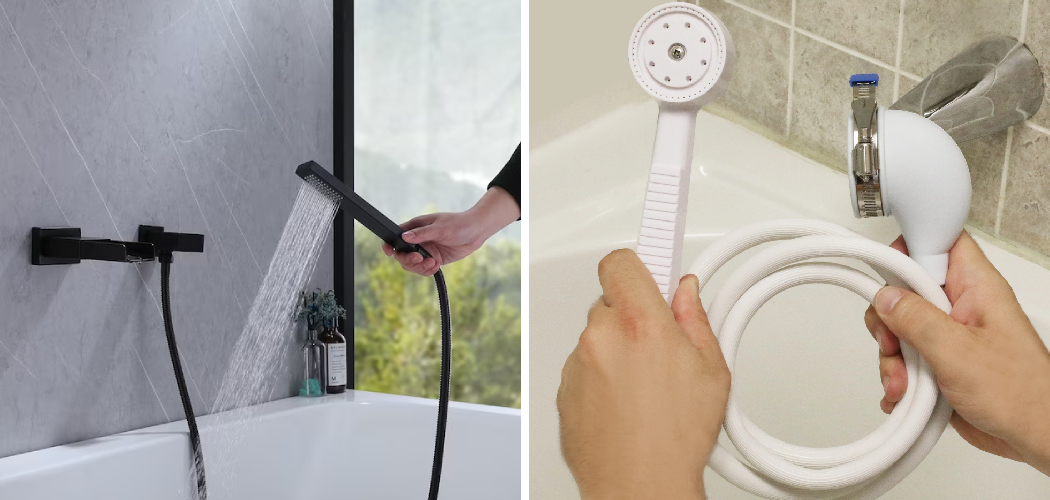Are you tired of taking baths and ready to jump in the shower? Or perhaps you’re planning a remodel for your bathroom but don’t have the budget to buy brand-new fixtures. Converting your bathtub faucet into a shower is an easy, cost-effective solution and can be done quickly with just some basic tools and supplies.
Whether you’re remodeling your bathroom or just want to change the look, converting your faucet to a shower provides a decorative upgrade that allows for flexibility in use.
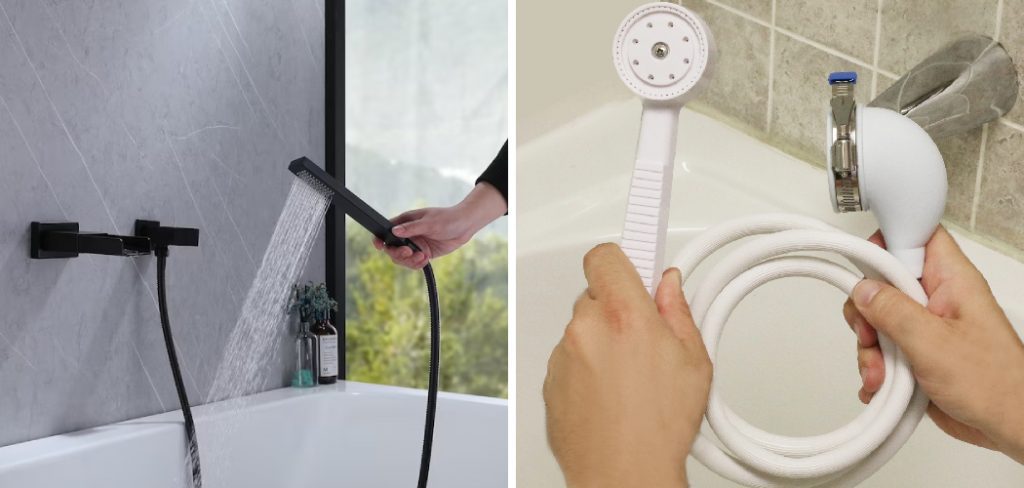
In this post, we’ll walk through everything you need to know about how to convert bathtub faucet to shower. We will cover all of the essential steps – from choosing the right materials, preparing installation points, connecting plumbing pipes, and getting familiar with valves – so that once completed, you will be able to transform any area of your bathroom into an inviting spa-like retreat!
When Should You Convert Your Bathtub Faucet to a Shower?
Before you can begin the process of how to convert a bathtub faucet to a shower, it’s important to understand when this project is best completed. If you’re looking for ways to transform your bathing experience and create a more luxurious look in your bathroom, then converting your bathtub faucet to a shower is the perfect solution.
This project can be done in as little as one day if all of the materials are on hand and offers a great way for homeowners to save money on expensive fixtures without sacrificing quality or aesthetic design.
In addition, some areas, such as handicap-accessible bathrooms, may require a shower over a bathtub. If you’re considering adding this type of feature, then converting your bathtub faucet to a shower is the perfect way to go about it.
Now that you know when this project should be completed, let’s move on to the next step – gathering all of the materials and supplies you’ll need.
What Will You Need to Convert Bathtub Faucet to Shower?
The first thing you’ll need to do for this project is gather all the necessary materials and supplies. Here’s a list of what you will need:
- Showerhead
- Tub spout
- Wall mount for the shower head
- Shower valve & trim kit
- Plumbing supplies such as pipe fittings, water supply lines, and PEX tubing
- Teflon tape or pipe joint compound
Once you have all of your materials on hand, it’s time to move on to the next step – preparing for installation.
10 Easy Steps on How to Convert Bathtub Faucet to Shower
Step 1. Turn Off the Water Supply:
Before you begin any plumbing project, turning off the water supply is essential. This can be done by turning off the main water valve or the shut-off valves at the fixture. Once all the water has been shut off, open up faucets in your home to ensure all the water has been drained from the pipes.
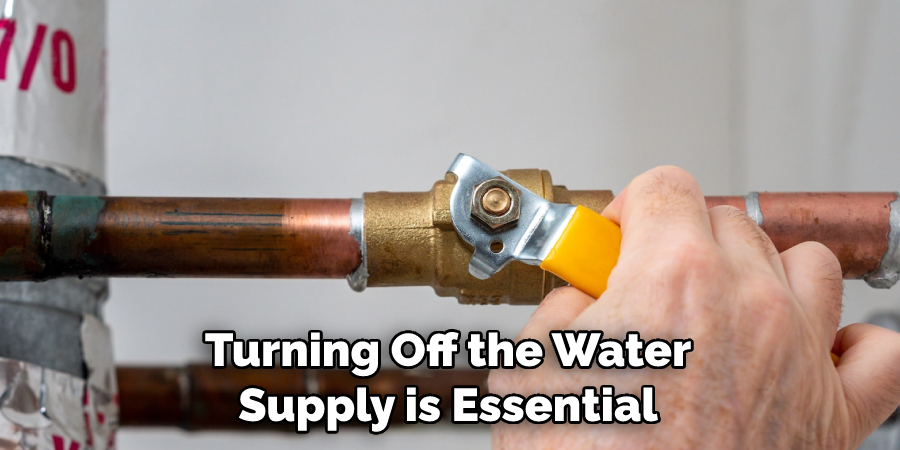
Step 2. Remove Existing Faucet:
Now it’s time to remove the existing bathtub faucet. First, unscrew and detach any handles or knobs from the faucet and then use an adjustable wrench to loosen and remove the old faucet. Be sure to keep all of the pieces in a safe place, as these will be reused when installing the new shower head.
Step 3. Prepare Installation Points:
Once the old faucet has been removed, it’s time to prepare the installation points for your new showerhead. Depending on your setup, this could be a single-handle valve, two handles for dual control, or two-way valves. Make sure to measure the area accurately and note any obstructions before you begin cutting into the wall
Step 4. Install New Valve and Trim:
Now that all of the necessary measurements have been taken, it’s time to install the new valve and trim kit. Start by attaching the mounting bracket to your wall with drywall anchors if needed. Once secure, attach the new valve and trim kit onto the mounting plate and use Teflon tape or pipe joint compound to seal all of the joints properly.
Step 5. Connect Plumbing Pipes:
Next up is connecting the plumbing pipes. This is where having a reliable set of pipe wrenches and adjustable wrenches comes in handy. Take your time when making the connections to ensure that everything is secure and tight.
Step 6. Install Shower Head:
Now it’s time for the exciting part – installing the new shower head! Start by attaching the wall mount onto your wall with drywall anchors, then attach the shower arm onto the wall mount using Teflon tape or pipe joint compound. Finally, install your new shower head by screwing it into place and securing it with an adjustable wrench.
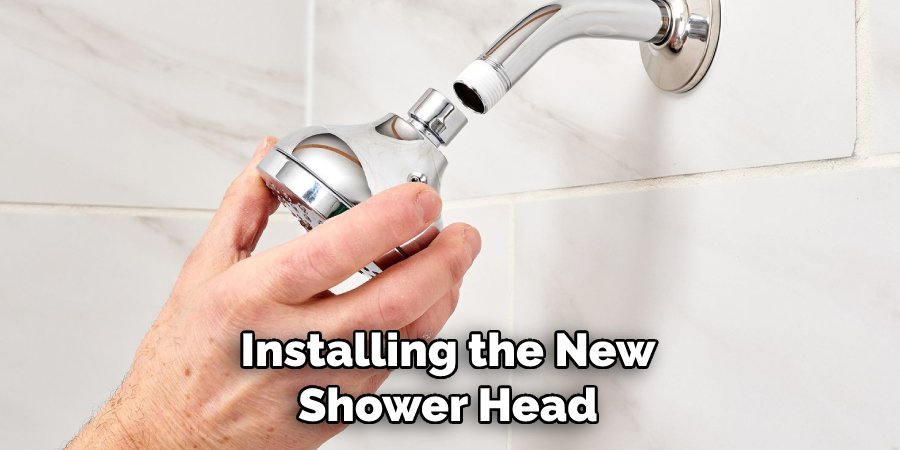
Step 7. Test For Leaks:
With all of the pieces now installed, turn on the water supply to test if there are any leaks. If you’ve done a good job and there aren’t any leaks, then congratulations – you have successfully converted your bathtub faucet into a shower! Don’t forget to turn off the water supply when you’re done.
Step 8. Install Tub Spout:
Finish up the project by installing the tub spout onto the end of your water supply line using Teflon tape or pipe joint compound. Make sure to keep all the connections secure and tight so that they don’t leak when in use. If you’re using a two-way valve, make sure to attach the diverter handle to the tub spout as well.
Step 9. Apply Caulk:
If needed, apply caulk around the perimeter of the tub spout before attaching it to your wall mount for an extra layer of protection against moisture and air leakage. You can add more caulk around the edges of the wall mount once it’s been secured in place. It will also help keep the water from seeping out and damaging your walls.
Step 10. Clean Up:
Finally, it’s time to clean up the installation area and remove all your tools. This is an important step to ensure that no pieces or tools are left in the installation area that could cause injury or damage down the road. Remember, safety comes first!
Congratulations! You have successfully converted a bathtub faucet into a shower head – now you can easily enjoy luxurious showers. Good luck and happy plumbing!
5 Additional Tips and Tricks
1. Use a Small Mirror: A small mirror can help you to see and reach hard-to-reach places when installing plumbing fixtures.
2. Use a Pipe Thread Sealant: To ensure a watertight seal, make sure to use Teflon tape or pipe joint compound on all of the connections.
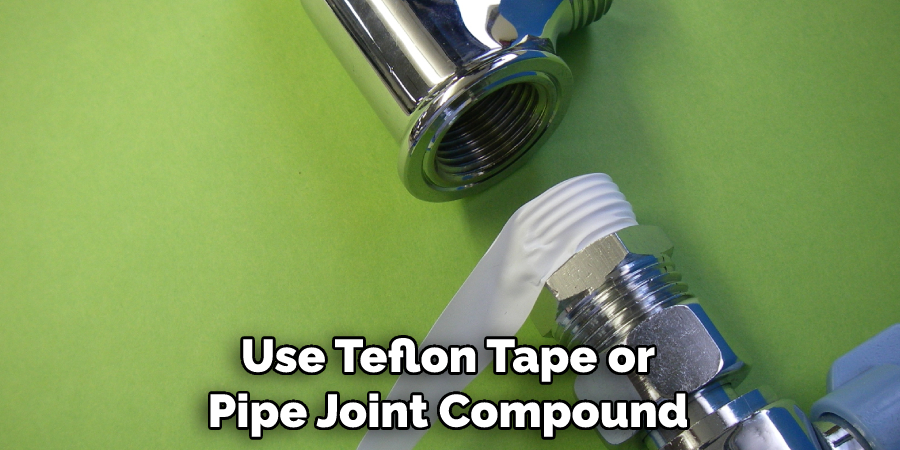
3. Cover the Drain: Make sure to cover the drain with a rag before unscrewing any pipes or fittings, as small pieces could potentially fall into the drain and cause a clog.
4. Check for Leaks: Check all your connections multiple times to ensure there are no leaks or drips before turning on the water again.
5. Take Your Time: Patience goes a long way when it comes to plumbing projects – take your time, and you’ll get the job done right.
Following these steps teaches you how to convert a bathtub faucet into a shower head. With a little bit of patience and some basic knowledge, you can easily complete this project and save money. Once completed, you can enjoy luxurious showers with ease – good luck!
5 Things You Should Avoid
1. Avoid Using Metal Wrenches: Metal wrenches can damage the fittings and cause leaks, so use adjustable wrenches or plastic-coated wrenches instead.
2. Don’t Forget to Turn Off the Water Supply: Always make sure to shut off the water supply
before starting any plumbing projects to avoid any messes or injuries.
3. Avoid Over-tightening Connections: Make sure not to tighten connections too tightly, as this
could lead to the stripping of the threads and possible leaks.
4. Don’t Forget About Caulk: Caulk is an important step in ensuring a waterproof seal around your shower head – don’t forget about it!
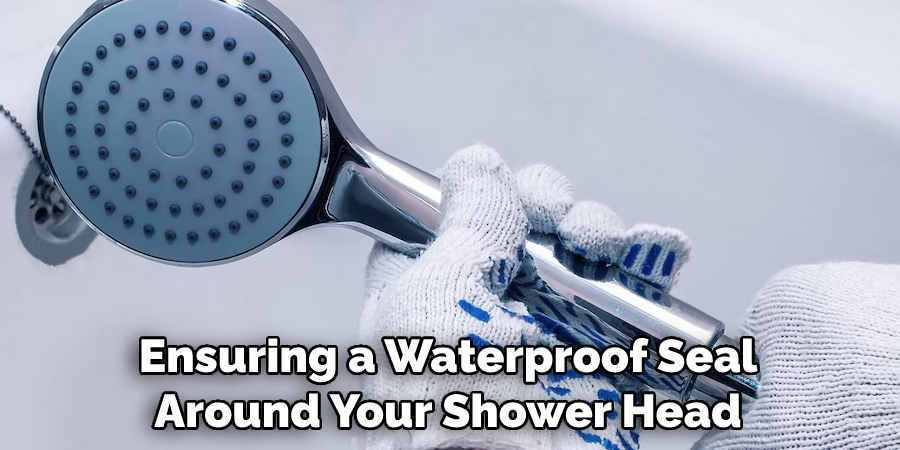
5. Avoid Using Unapproved Materials: Stick to materials that have been approved and tested for use in plumbing projects, as using unapproved materials can lead to malfunctions and possible injuries.
By following these tips and avoiding the things mentioned above, you can successfully convert a bathtub faucet into a shower head without any problems.
What is the Difference Between a Shower Faucet and a Tub Faucet?
The difference between a shower faucet and a tub faucet lies in the design. A shower faucet is designed to point down at an angle toward the floor, whereas a bathtub faucet is designed to point up toward the walls or ceiling. Shower faucets come equipped with diverter valves that allow you to switch from a spray setting to a steady flow of water. Tub faucets typically do not have this feature.
Additionally, shower fixtures often require additional installation steps, such as tiling and caulking, whereas tub fixtures do not require these steps. Therefore, it is important to understand the differences between these two types of fixtures before attempting to convert one into the other.
When done correctly and safely, you can enjoy the benefits of a shower or tub faucet, depending on your needs.
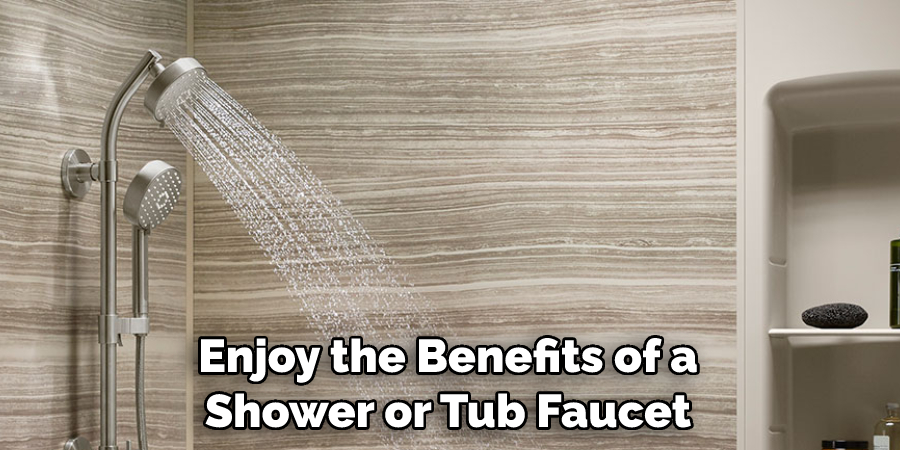
Can You Install a Shower Over a Bathtub?
Yes, you can install a shower over your bathtub as long as the existing plumbing is able to support it. Before beginning the installation process, you will need to measure the space and determine what type of showerhead and valves you want to use. Additionally, you should check with your local building codes for any requirements that must be met before installing a shower over a bathtub.
Once the measurements are taken, and all requirements have been met, you can begin the installation process by attaching brackets or walls, if necessary, followed by mounting the showerhead or valve. After all of this is done, make sure to test your work before using it – safety first!
By following these steps and keeping safety in mind throughout your project, you can easily and successfully install a shower over your bathtub. Good luck!
What is the Most Common Bathtub Leak?
The most common bathtub leak is a leaky faucet or shower head. This occurs due to wear and tear, improper installation, or debris buildup within the pipe itself. To fix this issue, you must identify where the leak is occurring and then replace or repair the faulty parts. It can help to use the plumber’s tape around any connections that may be loose in order to create a water-tight seal.
Additionally, inspecting your pipes for any signs of corrosion or damage that could lead to leaks in the future can be helpful. Call a professional plumber who can provide more information on how best to address your situation. By taking these preventative steps and keeping an eye on your plumbing system, you can help avoid any costly future repairs.
By following these tips and taking action quickly when you notice any issues, you can minimize the risk of bathtub leaks and ensure that your tub stays leak-free!
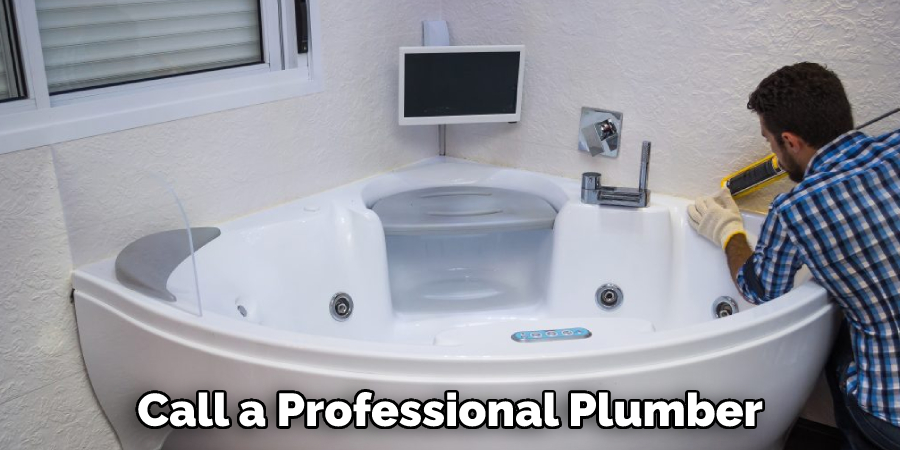
Conclusion
Converting the bathtub faucet to a shower is more achievable than you may think. With the right parts, tools, and understanding of basic plumbing principles, you can take advantage of the power of water pressure to create an entirely new opportunity in your home.
Whether it’s to improve accessibility or just have a new shower option available, these steps can help you make the change happen. The great news is that this creative DIY project should last for years with proper maintenance. Plus, how satisfying is it to be able to do something that not only looks nice but provides function?
What’s more, you may even save money on the water with a high-efficiency showerhead and cartridge. For further peace of mind, contact certified plumbers and ask for their advice on the best installation methods for your specific situation.
We hope you enjoyed exploring this fascinating conversion on how to convert bathtub faucet to shower and found it easy to get started on your own shower-in-a-faucet transformation today!

